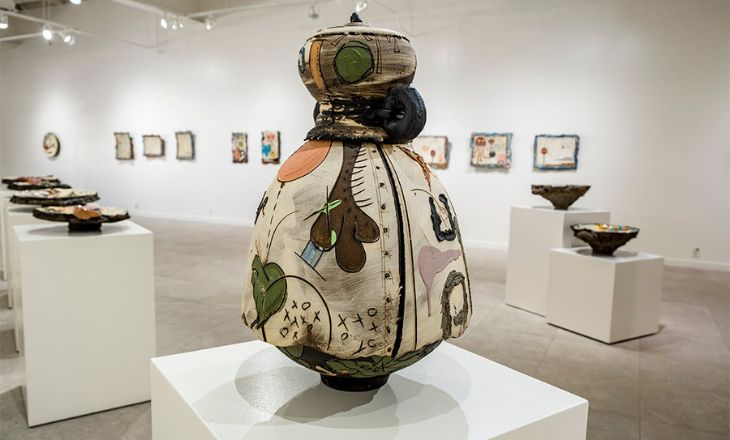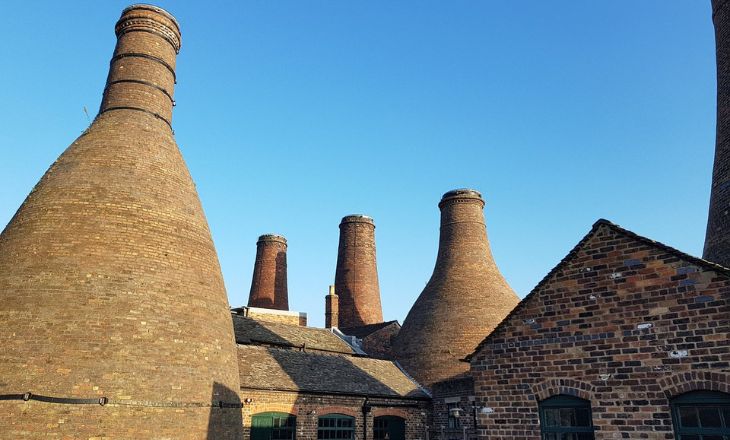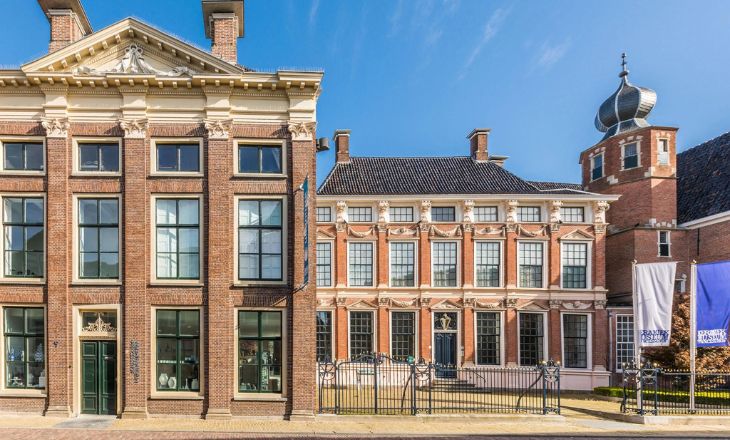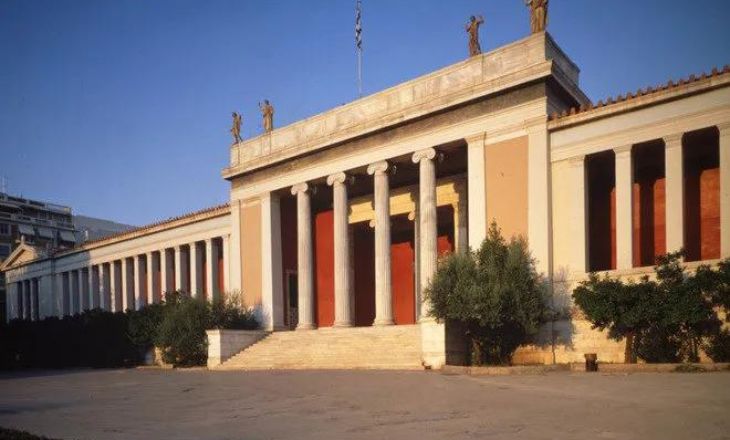If the timeless beauty of pottery and ceramics captivates your heart, then the world is brimming with destinations that will leave you spellbound. From ancient artifacts that tell the stories of civilizations long past to contemporary masterpieces pushing the boundaries of the craft, ceramic museums offer a rich tapestry of history, culture, and artistry.
In this blog, we journey through some of the most remarkable ceramic museums around the globe, each a treasure trove of inspiration and creativity for pottery lovers. These museums are must-visit havens that celebrate the enduring allure of ceramic art.
Must-Visit Ceramic Museums for Art Lovers
Ceramic museums are the paradise for the potters. Each museum is a treasure trove of inspiration, offering a glimpse into diverse cultures and civilizations through the delicate strokes of clay. This batch of museums covers a wide variety of artist expressions and geographies.
American Museum of Ceramic Art
Created in Pomona, California 91767 at 399 N. Gary Ave. in 2003. Items from Art Museum; Location: 34.0610°N 117.7506°WThe owner Harry Armstrong, director Beth Ann Gerstein, and the builder Ben Hall Supply of public transport The Central Pomona webpage is amoca.org.

Located in Pomona, California, is the American Museum of Ceramic Art (AMOCA), an art museum dedicated to ceramic work. The museum, which was established in 2003 as a nonprofit organization, displays ceramic artwork from the past and present in both temporary rotating exhibitions and its permanent collection of 10,000 objects.
Why Should Potters Visit?
Thousands of years, pottery has been an integral part of human history and culture. It is significant in a number of important areas, Cultural Expression. The beliefs, customs, and aesthetics of many societies have been reflected through the use of pottery as a medium for artistic and cultural expression in”Making Pottery Can Aid in Increasing Emotional Stability”.
Because ceramics demand such strong focus, the process puts your mind and body into a very meditative state. Your anxieties and disappointments might dissolve in this meditative state.
The American Museum of Ceramic Art has some Amazing modern art. As many of the other museums on our list that focus on ancient artifacts, that is a little different. Because of COVID, they are holding a few virtual exhibitions featuring stunning images and videos of the valuable pieces.
Exhibitions also commonly serve as a platform for the celebration of human creativity and the sharing of ideas, promoting industries, artists, and innovators. Taking part in an exhibition, you may reach a wider audience and promote your brand while educating them about your offerings. Before releasing their goods to the broader public, exhibitors can conduct exhibits and receive business or general feedback about them, depending on the type of industry.
What People Are Saying
A useful strategy that can be customized for each person and helps define, choose, plan, and carry out a decent life that appears and is based on people’s skills (capital) rather than universally determined weaknesses.
The entire museum experience is greatly enhanced by what people are saying. Not merely repeating compliments, but also imparting knowledge, contrasting viewpoints, rendering experiences, and encouraging reciprocal learning in ceramics.
Every work on exhibit generated a conversation that deepened my comprehension of this wonderful art form. The mutual sharing of ideas amongst all attendees in the space amounted to nothing less than a live instructional demonstration that demonstrated the perfect fusion of intuition and creativity.
The Museum of Oriental Ceramics
One of the greatest ceramic collections in the world is found at the Museum of Oriental Ceramics, Osaka, a Japanese art museum. The primary sources of East Asian ceramics, which are shown and studied at this museum, are ancient China and Korea.

The public can have an aesthetically pleasing experience with first-rate collections thanks to the renowned Ataka Collection, which was donated by the 21 companies that make up the Sumitomo Group, and the Rhee Byung-Chang Collection.
Why Should Potters Visit?
The fascinating world of Japanese ceramics is at The Museum of Oriental Ceramics in Osaka, where potters discover a sensory paradise. One is left in awe by more than just the visual splendor; there is more to it than that. This well-known museum offers an interesting viewpoint on why these exquisite objects have been treasured for decades, serving as a powerful example of Japan’s rich cultural legacy.
Each piece on exhibit tells a powerful story about the skillful craftsmanship and distinctive clay-architecture processes that went into its development, especially if you work in the shaping industry as they do. It reminds aspiring masters with silent eloquence of the importance of every seemingly little detail in creating “living” masterpieces out of inanimate lumps of clay. This acts as both a motivation and a challenge.
What’s The Main Exhibit Right Now?
The legend of Yanagihara Mutsuo is a story that eloquently captures the complex craft of ceramic pottery, and it takes place deep within Kochi City, Japan. A protégé of famous professor and potter Tomimoto Kenkichi at Kyoto City University of Arts, Mutsuo’s origins as an artisan are deeply steeped in time-honored traditions and progressive innovation.
We learn more about Mutsuo’s innovative creative process. He skillfully combines avant-garde experimentation with tradition, a complex approach he picked up from Kenkichi himself. His most famous pieces represent an unrelenting investigation of form, texture, and color contrasts in ceramics to inspire.
What People Are Saying
They have discovered delight in strolling through the silent hallways filled with an amazing collection of ceramics that have been created through time and skill. There, a spectacular fusion is taking place as objects spanning millennia cohabit and exude a mystical atmosphere.
Every visitor is clearly promised the chance to observe the breadth of the ceramic art form’s cultural and historical influence through this deft juxtaposition. There objects from several periods coexist in a wonderful synthesis that exudes a truly fantastic atmosphere.
Gladstone Pottery Museum
The Gladstone Pottery Museum is a functional museum showcasing medium-sized coal-fired ceramics that were previously widely available in North Staffordshire, England, during the industrial revolution in the 18th and early 20th centuries. The museum can be found in Staffordshire’s Longton, Stoke-on-Trent.

Why Should Potters Visit?
Witnessing a coal-fired pottery factory in action is an experience that cannot be replicated. This location creates an intense and beautiful sense of raw authenticity and heritage, nestled amid an architectural jewel that reflects the aesthetics of the Industrial Revolution.
It’s as though you enter a time machine and emerge with a renewed appreciation for customs. Any potter would be wise to schedule a visit because this voyage will enhance not only your artistic abilities.
What’s The Main Exhibit Right Now?
This adventure would enhance your skill and increase your awareness of our common past, which is reason enough for any pod As the center of this enduring museum, it offers you a unique glimpse into the rich history of pottery, which was painstakingly created by industrious artisans using outdated equipment.
Discovering the complex procedure which involves watching a small ballet of clay take shape on a potter’s wheel, will take you back to a time when manufacturing was not just about speed but also about examples of human inventiveness coupled with exacting perfection. The cobblestone courtyard outside tells stories without words, each stone expressing a different story about lives entwined with the Industrial Revolution.
What People Are Saying
The things people are saying about this incredible institution are really incredible. It really does bring to life an experience unlike any other, made even more so by the presence of gifted potters who are eager to share their expertise. Not only do they impart knowledge, but they also enlighten and inspire guests with their deep insights into the complex process of creating pottery, exuding their passion for creating works of art out of a lump of clay.
Such in-depth engagement beyond the ordinary memorization of hazy historical information is typically connected to museums. It develops into a dynamic apprentice-master setup in real time that greatly enhances your comprehension and appreciation of each on-exhibit artwork.
Every sculpture is enriched with brilliant color by their fascinating experiences and personal narratives, which convey stories that are more captivating than they appear. This museum is unlike anything else in recent memory because of the unmatched access to talented potters. It is a must-visit location.
Keramiek Museum Princessehof
In the Dutch city of Leeuwarden, there is a ceramics museum called the Princessehof Ceramics Museum (Keramiek Museum Princessehof). The name of the museum is derived from one of the two structures that house it: a modest palace (hof, which means “royal court”) constructed in 1693 and later inhabited by Marie Louise, the dowager Princess of Orange.

Why Should Potters Visit?
The Princessehof National Museum of Ceramics is housed in an 18th-century palace that has been turned into a treasure trove for potters, ceramic aficionados, and artists worldwide. In that room unfolds a finely woven tapestry of human culture as told via pottery.
There is nowhere else to find such a wide variety of pottery; the museum showcases an astounding array of minute details that provide insights into several cultures spanning centuries. there’s really better to hone your craft or ignite your imagination than the opulence of an 18th-century royal castle surrounded by thousands of ceramic objects from throughout the world.
What’s The Main Exhibit Right Now?
The tools and artifacts in the rituals area are connected to a range of ceremonies that commemorate life events, from birth to death, highlighting the great diversity ingrained in the history of our culture.
The exhibit reveals facets of our nation’s rich history that have been painstakingly preserved since antiquity. Examining the current primary exhibit is like traveling back in time while still reflecting the complexities of our modern culture. Don’t miss this immersive encounter with history—it will be equally thought-provoking and breathtaking.
What People Are Saying
There’s more to the allure. You cannot help but be enthralled by the craftsmanship and tales each item tells as you stroll through galleries brimming with antiques dating back hundreds of years.
the interactive exhibits aim to pique your interest and entice you to learn more about ceramic art creation—they’re not only for seeing. Giving in to these temptations may lead to fresh insights or even ignite a new interest, highlighting how frequently we take such minute elements for granted in our day-to-day existence.
People have amazing things to say about this underappreciated treasure of a museum. This museum, which is conveniently located in the middle of the city, is small in size yet carries a powerful punch. The thoughtfully chosen displays immerse visitors in the enthralling realm of ceramic arts while taking them on a voyage through time and space.
National Archaeological Museum
One of the most significant museums in the world devoted to ancient Greek art is the National Archaeological Museum of Athens, which is also the largest archaeological museum in Greece.

Why Should Potters Visit?
This museum offers a chance for self-education on how historical techniques created the pottery. Hands-on observation of the craft’s centuries-long growth will enthrall potters and provide inspiration unmatched by anything modern’ could. There isn’t a place like this if you have an intense interest in ceramics and want to gain a deep understanding of its history. Global potters ought to view Athens’ National Archeological Museum as a holy site deserving of a pilgrimage.
What’s The Main Exhibit Right Now?
You wouldn’t be misled by the impression of an empty gallery that a cursory glance at the “Main Exhibit of The Month” may give you. It’s true that there isn’t a special exhibit being highlighted at the moment. That does not mean the space is empty. Explore their well-liked displays that never cease to amaze and educate visitors. These displays can bring art enthusiasts face to face with masterpieces from many eras and genres or tell stories through historical objects from civilization.
Visitors are afforded an equal chance to enjoy the plethora of other treasures on display by the temporary removal of the main exhibit—a welcome diversion from conventional curating techniques, indeed! So go ahead and go off on your incredible voyage through culture, history, and creativity without regard to constraints or seasonal themes. The museum provides one of the most unique experiences.
What People Are Saying
It’s definitely worth paying attention to what people are saying about one of the most beautiful museums in the country. This museum, an architectural masterpiece in and of itself, has a variety of captivating exhibitions that leave visitors in awe. They are thought-provoking and visually appealing. Some exhibits are particularly noteworthy for their originality; one such example is the amazing Antikythera mechanism, a historically significant gadget whose complicated design alone may keep you occupied for days.
Those who visit become utterly engrossed in fascinating treasures that are not found anywhere else and provide new insights into historical eras. The museum’s immersive experience transports you virtually to many eras and locations while fostering comprehension via captivating visual narratives. People are essentially arguing that this wonderful institution curates moments frozen in time for everyone to enjoy and learn from, rather than just exhibiting objects.
Conclusion
Exploring the world of ceramics through these extraordinary museums is an enriching experience for any pottery lover. Each museum not only showcases remarkable craftsmanship and artistic evolution but also preserves the cultural heritage and historical significance of ceramics.
From the traditional to the avant-garde, these institutions offer a glimpse into the diverse world of pottery, inspiring visitors with their curated collections and exhibitions. As you plan your next travel adventure, consider adding these ceramic museums to your itinerary. They promise not just a feast for the eyes but a profound appreciation for the artistry and dedication that shape this timeless craft.
FAQs
Which Country is Famous for Ceramics?
Spain is celebrated for its vibrant ceramic traditions, notably in regions like Andalusia and Catalonia, where intricate designs and bold colors define the craft. From decorative tiles to ornate pottery, Spain’s ceramic artistry has left an indelible mark on the world stage.
What is the Purpose of Ceramic Art?
Ceramic art serves both aesthetic and functional purposes, enriching spaces with beauty while also fulfilling practical needs through items like pottery, tiles, and sculptures. It preserves cultural heritage, conveys narratives, and invites tactile engagement, bridging the gap between artistry and everyday life.
What is the Oldest Ceramic in the World?
The oldest known ceramic objects are the Gravettian figurines, dating back to around 29,000–25,000 years ago. These small, intricately carved statuettes were discovered in various sites across Europe, showcasing early humans’ remarkable skill in sculpting and firing clay.
